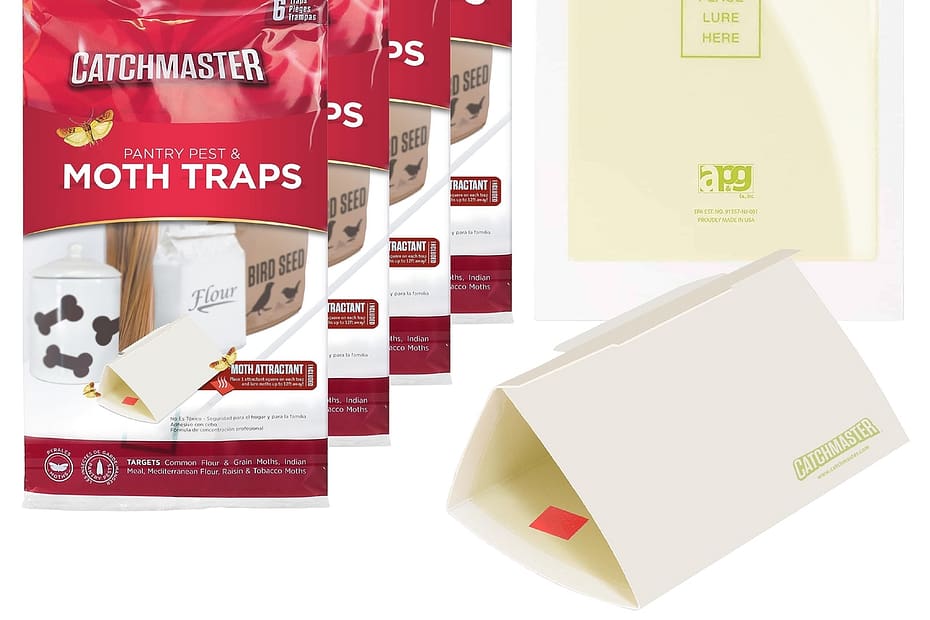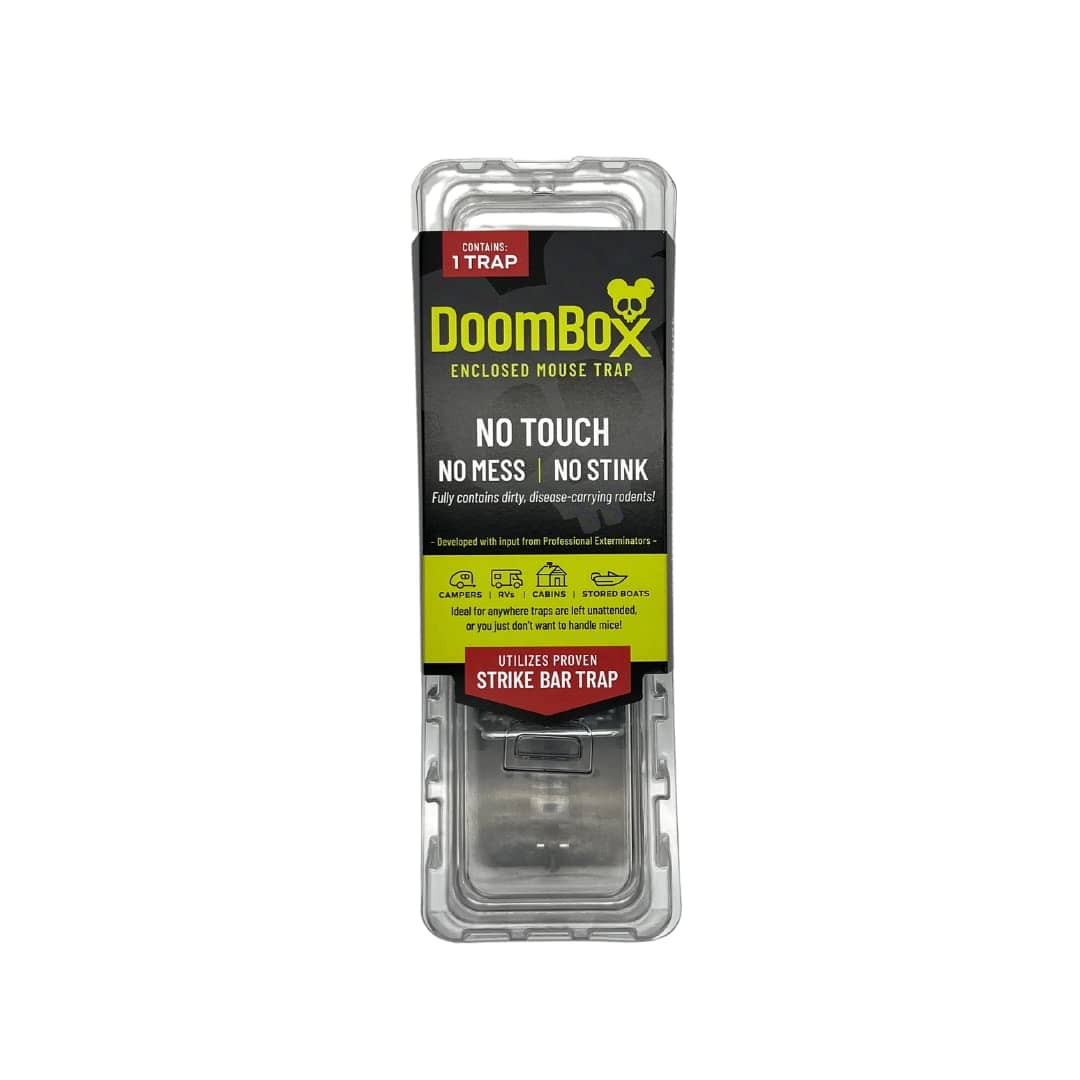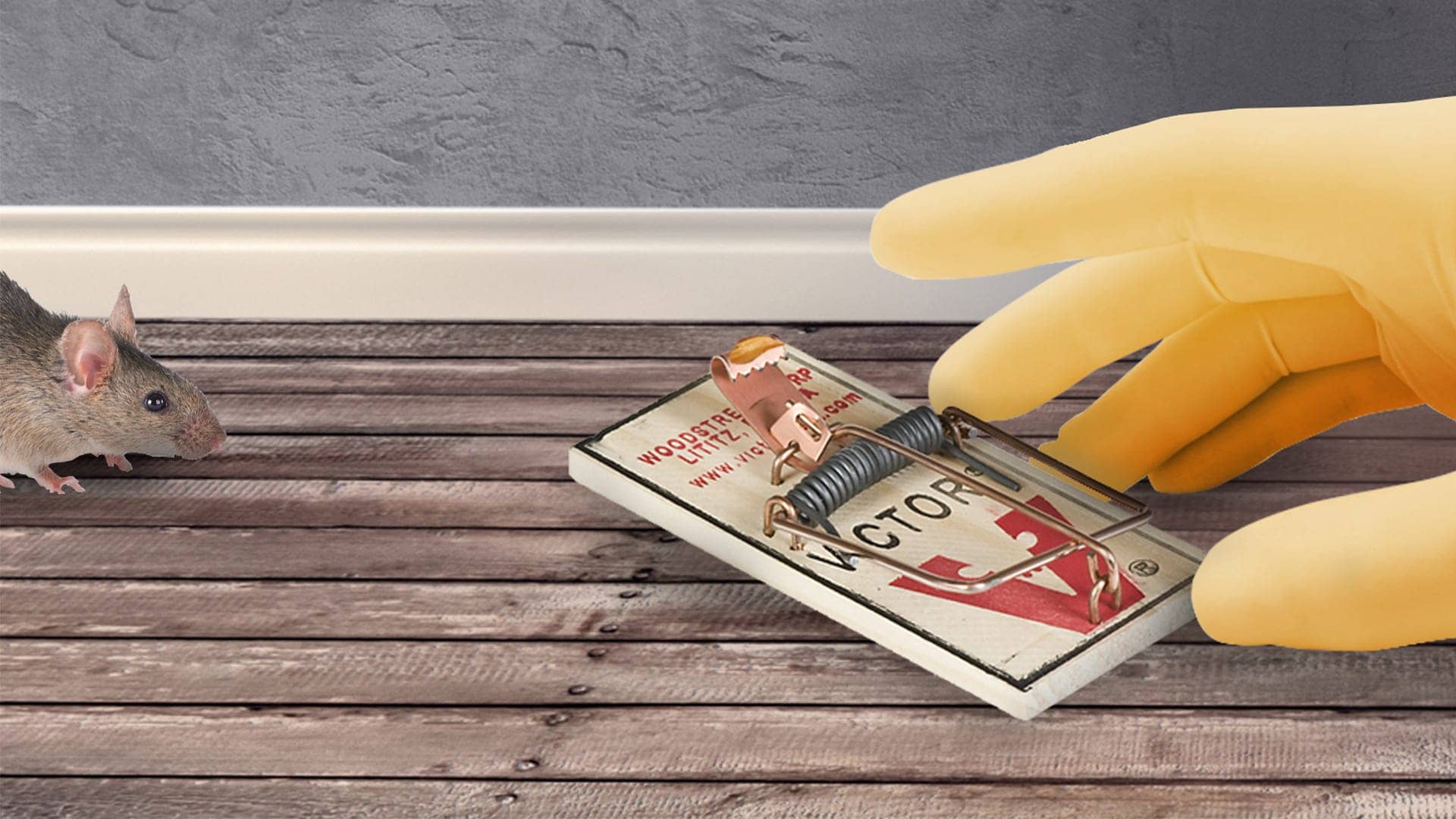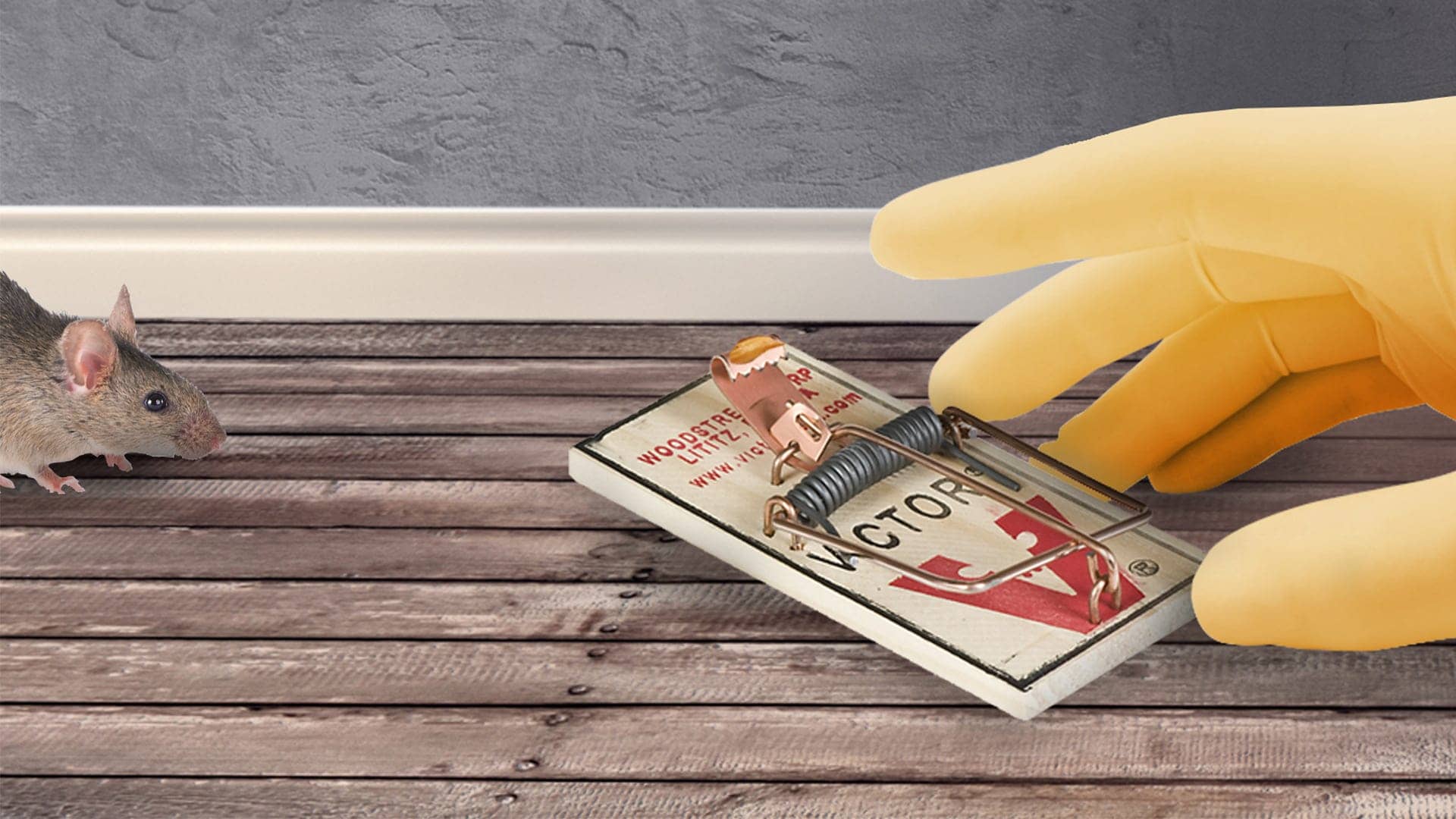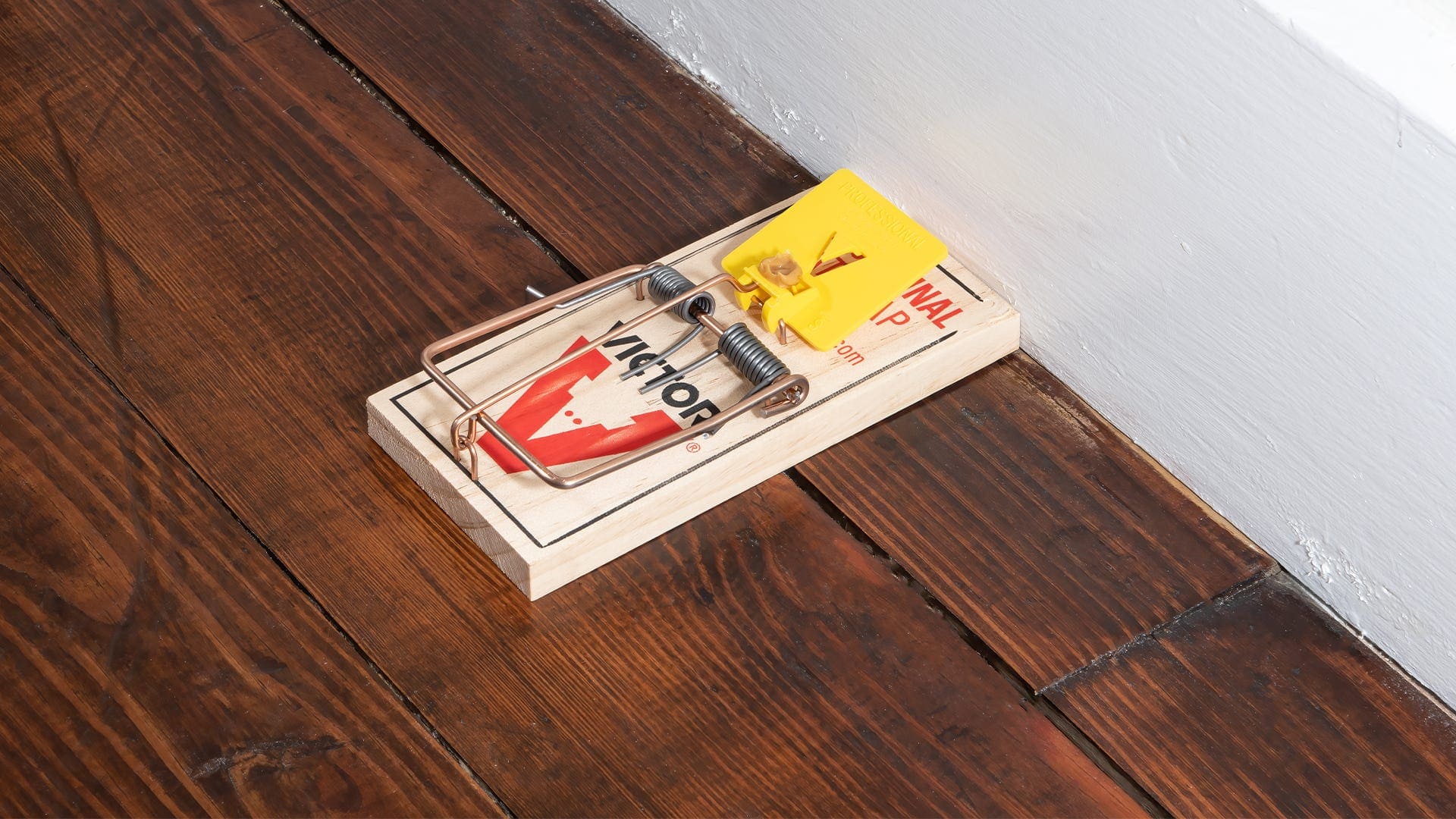For effective mouse trap placement in kitchen and pantry areas, position traps in areas near walls and corners and place them along known mouse pathways or near evidence of mouse activity such as droppings or chew marks. This will increase the chances of capturing mice and effectively eliminating the problem.
Mice can be a common problem in kitchens and pantry areas, causing damage to food products and spreading disease. Therefore, it is important to implement effective mouse trap placement strategies to eliminate these pests. By strategically positioning traps near walls, corners, and areas of known mouse activity, such as droppings or chew marks, you can significantly increase your chances of capturing mice and resolving the issue.
We will explore the best practices for mouse trap placement in kitchen and pantry areas, ensuring a pest-free and hygienic environment for your home or business.

Credit: www.terminix.com
Importance Of Proper Mouse Trap Placement
Proper mouse trap placement is crucial in kitchen and pantry areas to effectively eliminate rodents. By strategically positioning traps near their common entry points, such as gaps in walls or under sinks, you increase the chances of successfully catching mice and preventing further infestation.
A strategic placement of mouse traps is crucial for effective mouse control in kitchen and pantry areas. Mice are agile creatures that can squeeze through tiny gaps and move swiftly. To maximize the chances of trapping mice successfully, it is essential to understand their behavior and movement patterns in these areas.
Avoiding common mistakes in trap placement can significantly improve the outcomes and help keep your kitchen and pantry areas rodent-free.
Why Proper Placement Matters For Effective Mouse Control:
- Increased likelihood of capture: Placing mouse traps in the right locations increases the chances of trapping mice. Mice prefer to run along walls and structures rather than venturing into open areas, so positioning traps against walls or along their pathways is ideal for success.
- Targeted approach: Proper placement allows for a targeted approach, focusing on areas where mice are most likely to be active. By identifying their entry points, nesting sites, and areas with food sources, you can strategically position traps to intercept their movements.
- Reduced risk to humans and pets: Strategic trap placement helps reduce the risk of accidental encounters with traps by humans and pets. By placing traps in discreet locations, such as behind appliances or in hidden corners, you can minimize the chances of unintended harm.
- Efficiency and effectiveness: When mouse traps are placed correctly, they are more likely to yield quick and effective results. Proper placement ensures that the traps are in the mice’s direct path, making it harder for them to avoid or escape capture.
Understanding The Behavior And Movement Patterns Of Mice In Kitchen And Pantry Areas:
- Exploratory nature: Mice are curious creatures that regularly explore their surroundings, especially areas with readily available food sources. They tend to follow specific routes along walls and furniture, making these pathways ideal locations for trap placement.
- Nocturnal habits: Mice are primarily active during the night, searching for food while most humans are asleep. By observing signs of activity, such as droppings, gnaw marks, or food packaging damage, you can determine the optimal trap placement locations.
- Preventing escape: When placing traps, it’s crucial to consider potential escape routes for mice. Seal off any openings or small gaps that mice could exploit to evade capture. This ensures that they are directed towards the traps instead of finding alternative paths.
- Strategic bait placement: Mice follow their sense of smell to find food sources. Placing bait in traps strategically can attract them and increase the chances of effective trapping. Avoid handling bait with bare hands to prevent human scent from deterring mice.
Common Mistakes To Avoid When Placing Mouse Traps:
- Cluttered areas: Placing traps in cluttered areas can obstruct the mice’s path and decrease the chances of capture. Keep kitchen and pantry areas tidy and remove any potential obstructions to ensure mice have direct access to the traps.
- Inadequate trap numbers: Insufficient traps can result in missed opportunities for capture. It’s essential to use an adequate number of traps to cover all potential mouse activity areas adequately.
- Wrong trap type: Choosing the wrong type of trap can reduce its effectiveness. For example, snap traps work well in small spaces, while live traps are better for areas where mice sightings are infrequent.
- Inconsistent trap monitoring: Monitoring traps regularly is crucial for effective mouse control. Failing to check traps frequently allows caught mice to decompose, leading to unpleasant odors or attracting other pests.
By understanding the importance of proper placement and avoiding common mistakes, you can enhance your mouse control efforts in kitchen and pantry areas. Implement these tips to efficiently trap mice and maintain a clean and safe environment for you and your family.
Identifying Problem Areas
For effective mouse trap placement in kitchen and pantry areas, it is important to identify problem areas where mice may enter or hide. Take note of any gaps, cracks, or food sources that may attract them, and position traps strategically to address these issues and prevent infestations.
Assessing Potential Entry Points For Mice In The Kitchen And Pantry:
- Inspect the kitchen and pantry areas thoroughly to identify possible entry points for mice.
- Look for gaps or cracks in walls, windows, and doors that mice could squeeze through.
- Pay attention to areas where pipes or cables enter the room, as mice can travel through these openings.
- Check the baseboards and flooring for any gaps or holes where mice could gain access.
- Ensure that screens on windows are intact and properly fitted.
Identifying Signs Of Mouse Activity And Determining High-Traffic Areas:
- Look for droppings, gnaw marks, or shredded materials in the kitchen and pantry, as these are signs of mouse activity.
- Pay close attention to areas where food particles or crumbs are commonly found, as mice are attracted to these sources.
- Check for grease or dirt smears along walls and baseboards, indicating mouse traffic routes.
- Keep an eye out for burrows or nests in dark corners or hidden areas of the kitchen and pantry.
Addressing Food Sources And Removing Attractants:
- Store food in airtight containers to prevent mice from being lured by the smell.
- Regularly clean up spills and crumbs, ensuring that the kitchen and pantry areas are free from loose food items.
- Dispose of garbage promptly and properly in sealed containers.
- Avoid leaving pet food or bird feeders accessible to mice.
- Seal all food packages tightly, including pet food bags, cereals, and grains.
By following these mouse trap placement tips for your kitchen and pantry areas, you can effectively eliminate mice infestation issues and ensure a hygienic environment in your home. Remember, prevention is key, so stay vigilant and address any potential entry points or food sources that may attract mice.
Strategic Placement Techniques
Discover strategic mouse trap placement techniques for kitchen and pantry areas. Ensure effective rodent control with these practical tips.
When it comes to mouse trap placement in kitchen and pantry areas, strategically positioning the traps is essential for effective mouse control. By targeting areas of mouse activity, utilizing vertical space, and placing traps along walls and corners, you can increase your chances of trapping mice and preventing further infestations.
Here are some strategic placement techniques to consider:
Placing Mouse Traps Near Areas Of Mouse Activity, Such As Droppings Or Gnaw Marks:
- Inspect your kitchen and pantry for signs of mouse activity, such as droppings, gnaw marks, or chewed food packaging.
- Position mouse traps near these areas to maximize their chances of capturing mice.
- Mice frequently revisit areas where they find food, so placing traps in these locations increases your chances of success.
- Consider using sticky traps in areas where mice are actively traveling to catch them without the need for bait.
Utilizing Vertical Space For Trap Placement To Target Mice Climbing On Shelves And Cabinets:
- Mice are excellent climbers and often explore the vertical spaces within your kitchen and pantry.
- Install mouse traps on shelves, cabinets, or other elevated surfaces where mice are likely to travel.
- Place traps near the edges of these surfaces, as mice typically follow the edges when moving around.
- Secure the traps to prevent them from falling off or being knocked over by mice.
Placing Traps Along Walls And Corners Where Mice Tend To Travel:
- Mice prefer to travel along walls and corners, feeling more secure in tight spaces.
- Position mouse traps along walls and corners to intercept their regular travel routes.
- Ensure that traps are placed with the trigger side facing the wall or corner to increase effectiveness.
- Avoid obstructing the trap’s path with obstacles or clutter that could deter mouse movement.
By following these strategic placement techniques, you can increase the likelihood of successfully capturing mice in your kitchen and pantry areas. Remember to regularly inspect the traps and dispose of any captured mice properly according to local regulations or guidelines.
Best Trap Types For Kitchen And Pantry Areas
Discover the best trap types for mouse control in your kitchen and pantry areas. Learn effective mouse trap placement tips to keep your space rodent-free.
In order to effectively get rid of mice in your kitchen and pantry areas, it’s important to choose the right mouse trap type. Here are some options to consider:
Options For Humane Traps:
- Live catch traps: These traps are designed to catch mice without harming them. They have a one-way entry door that allows mice to enter but not escape. Once caught, you can release the mouse back into the wild.
Options For Electronic Traps:
- Electric shock traps: These traps deliver a lethal electric shock to mice that enter them. They are quick and efficient at killing mice, making them a popular choice for kitchen and pantry areas.
Options For Snap Traps:
- Classic snap traps: These traps consist of a wooden base with a metal bar that snaps down when triggered by a mouse. They are effective and relatively inexpensive, making them a common choice for kitchen and pantry areas.
Options For Glue Traps:
- Sticky glue traps: These traps have a sticky surface that captures mice when they walk on it. Once stuck, it’s difficult for mice to escape. Glue traps are less humane than other trap types but can be effective in certain situations.
Considerations for safe and effective trap selection:
- Presence of pets and children: If you have pets or young children in your home, it’s important to choose a trap that is safe and secure, such as a live catch trap or an electronic trap.
- Level of infestation: The severity of your mouse problem can also influence your choice of trap. For larger infestations, snap traps or electronic traps may be more effective than humane traps.
- Location of the trap: Take into account where you plan to place the traps. Humane traps can be placed near entrances or areas where mice are actively seen, while electronic traps and snap traps can also be placed in hidden areas.
Pros and cons of different trap types:
- Humane traps:
- Pros: Ethical and safe for mice, can be re-used, reduces harm to other animals.
- Cons: Mice need to be released manually, may not be as effective in larger infestations.
- Electronic traps:
- Pros: Quick and efficient, safe for pets and children, reduces the need for handling dead rodents.
- Cons: Requires batteries or electricity, can be more expensive than other trap types.
- Snap traps:
- Pros: Cost-effective, reusable, easy to set up and dispose of dead mice.
- Cons: Can be dangerous for pets and children, may not always kill mice instantly.
- Glue traps:
- Pros: Easy to use, can catch multiple mice at once, relatively inexpensive.
- Cons: Inhumane, mice can suffer on the trap, not suitable for areas with high humidity.
Remember to carefully assess your specific situation and choose the trap type that best meets your needs for both effectiveness and ethical considerations.
Placement Tips For Specific Areas
Get effective mouse trap placement tips for your kitchen and pantry areas. Learn how to strategically position mouse traps to catch and eliminate mice in these specific areas to maintain a clean and pest-free environment.
Placing Traps In Cabinets And Cupboards
Here are some effective tips for placing mouse traps in cabinets and cupboards:
- Identify mouse signs: Look out for mouse droppings, chewed packaging, or any gnaw marks to determine the extent of mouse activity in your cabinets and cupboards.
- Choose appropriate traps: Opt for snap traps or catch-and-release traps, depending on your preference and the severity of the mouse infestation.
- Locate high-traffic areas: Place traps along the back of cabinets or cupboards, near food sources, and along mouse runways.
- Set traps properly: Make sure to set the traps according to the manufacturer’s instructions and in a way that mice are forced to trigger them.
- Use attractants: To increase the effectiveness of the traps, consider using bait or attractants such as peanut butter, cheese, or dried fruit near the traps.
- Be patient: Check the traps regularly to see if you’ve caught any mice. If traps remain empty for a while, try adjusting their placement.
Proper Trap Placement In Food Storage Areas And Pantries
When it comes to trapping mice in food storage areas and pantries, strategic trap placement is crucial. Consider the following tips:
- Keep it tidy: Maintain cleanliness and organization in your pantry to minimize places where mice can hide. Remove clutter and seal any potential entry points.
- Seal food containers: Store all food items in airtight containers, including dry goods and pet food, to deter mice from being attracted to your pantry.
- Place traps along walls: Position traps against walls or corners, as mice tend to follow edges rather than crossing open spaces.
- Target hidden areas: Set traps behind appliances, shelves, or furniture where mice might seek shelter or build nests.
- Choose the right traps: Utilize snap traps, glue traps, or electronic traps in pantries, ensuring they are safely out of reach of children and pets.
- Monitor and replenish: Continuously check the traps and replace bait if necessary. Remember to dispose of any caught mice safely and promptly.
Targeting Mouse Activity Near Kitchen Appliances
Mice often frequent areas around kitchen appliances due to their potential food sources. Consider these tips for effective mouse trap placement near appliances:
- Identify mouse pathways: Observe where mice travel around your kitchen appliances. Look for signs of gnawing or droppings to identify their activity routes.
- Place traps strategically: Position traps perpendicular to walls behind or beside appliances to intercept mice as they move along their usual paths.
- Be cautious of electrical hazards: Avoid placing traps where they could pose a risk near electrical outlets or wires.
- Use sticky traps: Consider using adhesive or glue traps near appliances as an alternative to snap traps. These traps can catch mice without the need for bait.
- Reassess trap locations: If traps are not yielding results, try moving them to different locations near appliances, focusing on areas with the most signs of mouse activity.
- Regularly maintain traps: Check traps frequently, ideally daily, and dispose of any trapped mice promptly to ensure optimal trap performance.
Remember, every infestation is different, and patience is often required. By implementing these placement tips, you can increase your chances of a successful mouse trapping outcome in kitchen and pantry areas.
Monitoring And Maintaining Traps
Monitoring and maintaining traps is essential for effective mouse control in kitchen and pantry areas. Proper placement according to mouse behavior patterns ensures increased chances of trapping them.
Regularly Checking And Resetting Traps For Maximum Effectiveness
- Place traps strategically: Position the traps in high-activity areas such as near food sources, along walls, and behind appliances.
- Check traps at least once a day: Regular inspection ensures that any trapped mice are removed in a timely manner.
- Reset triggers properly: After disposing of a captured mouse, reset the trap by following the manufacturer’s instructions. This ensures that the trap remains in working order.
- Inspect traps for damage or contamination: A damaged trap may not function effectively, so it’s crucial to check for any signs of wear and tear. Additionally, clean the traps thoroughly to remove any mouse odors that could deter other mice from approaching.
Proper Disposal Of Captured Mice And Cleaning Up After Trapping
- Use gloves and safety precautions: When handling trapped mice, wear disposable gloves to minimize the risk of disease transmission. After removing the mouse, discard the gloves properly.
- Disposal options: Depending on local regulations, you can either release the mice far away from your premises or dispose of them in sealed plastic bags in outdoor garbage bins.
- Clean and disinfect the area: After trapping mice, clean the area where the traps were placed. Use a disinfectant to eliminate any potential health risks and remove any remaining odors that may attract other mice.
- Seal entry points: To prevent future infestations, inspect the area for possible entry points and seal them accordingly. This eliminates potential access points for mice.
By regularly checking and resetting traps, as well as properly disposing of captured mice and cleaning up after trapping, you can effectively control the mouse population in your kitchen and pantry areas. Taking these steps will not only help eliminate existing mice but also deter future infestations through ongoing maintenance.
Remember to position the traps strategically, inspect them daily, and reset them as needed. Additionally, take the necessary precautions when handling captured mice and clean the area thoroughly after trapping. With these practices in place, you can keep your kitchen and pantry areas free from mice and maintain a hygienic environment for your household.
Additional Tips For Effective Mouse Control
Looking for effective mouse trap placement tips for your kitchen and pantry areas? Check out these additional tips to ensure successful mouse control in these areas. With strategic trap placement and proper baiting, you can increase your chances of catching those pesky rodents.
Sealing Entry Points And Blocking Potential Access For Mice:
- Inspect the kitchen and pantry areas for any cracks, gaps, or holes that mice can use as entry points.
- Seal these entry points using materials such as caulk, steel wool, or expanding foam.
- Pay close attention to areas where pipes or electrical wires enter the walls, as mice can squeeze through even small openings.
- Remember to check the areas around doors and windows, as well as the foundation of the house.
- Block potential access points by placing door sweeps and weatherstripping on doors and windows to prevent mice from sneaking in.
Maintaining Cleanliness And Proper Food Storage Practices In The Kitchen And Pantry:
- Keep the kitchen and pantry areas clean and free of food debris that can attract mice.
- Regularly wipe down countertops, sweep the floors, and clean up spills promptly.
- Store food in airtight containers, including dry goods like cereals, grains, and pet food.
- Store fruits and vegetables in the refrigerator or airtight containers to avoid attracting mice.
- Dispose of trash regularly and keep garbage cans tightly sealed.
Working With Professional Pest Control If Necessary:
- If all preventive measures fail or you suspect a larger infestation, consider working with professional pest control services.
- Professional exterminators have the expertise and tools to effectively deal with a mouse problem.
- They can identify the extent of the infestation, locate hidden nests or entry points, and develop an effective treatment plan.
- Professional pest control services can use safe and humane methods to eliminate mice from your kitchen and pantry areas.
- They can also provide long-term solutions and advice to prevent further infestations.
Remember, by sealing entry points, maintaining cleanliness, and working with professional pest control if necessary, you can effectively control and prevent mice infestations in your kitchen and pantry areas. Stay proactive and take the necessary steps to ensure a pest-free environment.
Frequently Asked Questions Of Mouse Trap Placement Tips For Kitchen And Pantry Areas
Where Should Mouse Traps Be Placed In The Kitchen?
Place mouse traps in the kitchen in areas where you’ve seen mouse activity or near their entry points.
How Do I Keep Mice Out Of My Kitchen Pantry?
To keep mice out of your kitchen pantry, follow these steps: Seal any entry points, store food properly, keep the area clean, and use mouse traps.
How Do I Catch Mice In My Pantry?
To catch mice in your pantry, use humane traps and place them near food sources. Regularly check traps and release mice far away from your home.
Should You Put Mouse Traps On Kitchen Counter?
It is not recommended to put mouse traps on the kitchen counter.
Conclusion
Effective mouse trap placement is essential for controlling mouse infestations in the kitchen and pantry areas. By strategically placing traps near their entry points, along walls, and in areas where they are most likely to travel, you can increase your chances of catching mice.
Keep in mind that mice are agile and can squeeze through small gaps, so sealing any cracks or holes in your kitchen and pantry is crucial. Furthermore, selecting the right type of trap for your specific situation, whether it’s snap traps, glue traps, or catch-and-release traps, will maximize your success.
Regularly monitoring and refreshing bait in the traps is also essential to maintain their effectiveness. By implementing these mouse trap placement tips, you can minimize the presence of mice in your kitchen and pantry areas, creating a safe and hygienic environment for you and your family.
